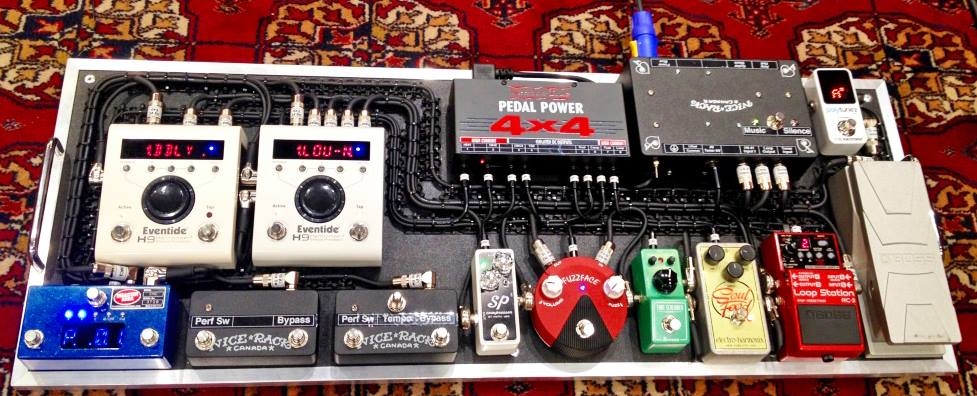
Power, power, power… This has to be the most asked question we get, well, the many variations of it anyway… I’m not kidding when I say it’s probably a daily event that one of us answers the question! So, I’m going to consolidate the headline points into here so hopefully we can provide you with the one stop place to get all the information! A few weeks ago, our friends over at That Pedal Show produced the ultimate geek-out about power, but running at 37 minutes, many didn’t get to the end so I am consolidating it here to make is easy to grab the basics, with a little of my own perspective to keep it relevant…
What power do your pedals take?
ALL of our pedals are designed to run at 9v DC, center pin negative (The DC and center pin negative is essential). Some of them can be run at 18v (you can see a list of those in our FAQ section here). So, most power adaptors will be just fine. We don’t recommend specific ones, but any one made by a reputable company should be good. If you need to double check, or a second opinion, you can ask us or any gear forum, or your local store! There’s always a load of people willing to discuss power… 9v is the amount of power (voltage) the pedal takes to work under standard operating conditions so if you want to hear it like Brian hears it, run it at 9v. However, Tom Quayle uses his Dual Fusion at 18v and I find it works best for me at around 15v.
What are mA?
Well, basically, this is how much juice your pedal is taking from the supply. This is the current. So, if your pedal takes 30mA, a 700mA adapter will be just fine. Anything up to the amount listed on the adapter theoretically will be good. You won’t melt a 30mA pedal down by putting a 700mA adapter in it, the pedal will just take what it’s needs and the rest is just not used. So, if you have 3 drive pedals; one at 30mA, one at 15mA and one at 25mA, your total draw will be 70mA which in theory still leaves 630mA ‘headroom’.
A simple way of putting it is that the voltage is the strength of the current and the mA is how much of it is used. Most plugs here in the UK have a 5A – 13A fuse in them, the US usually has 15A, so even if you are chain up a lot of 50mA pedals, you can draw tons of them at 9V until you start to run out of “headroom” from that plug. Hope that makes sense…
*One thing though, I wouldn’t try to push the adapter to the limits, leave some room. I’ve heard it say that if you draw over 60-70% of the adaptors power, you might see a drop in basic voltage which will affect the way the pedal sounds.
What is center pin negative?
Well, the tip of the plug (barrel type, usually 2.1mm) that goes into the pedal has two connectors, one on the inside and one on the outside, the one on the inside is the negative and the outside is positive. Who ever thought this up was clearly insane, it would be better to have the hot part on the inside out the way, but there you go. All of our pedals take DC, if you put AC into it smoke will appear, you will hear a pop and then you’ll have to send it back to us to be fixed – and the smell… it’s horrible. Remember, it’s the magic smoke in the pedal that makes it sound so cool, so if you put the wrong power in and the magic smoke is released then it won’t work anymore! We ensure there is protection inside each pedal if AC is put in, but all it does is limit the damage, it doesn’t resist it. So, please please please please do not put AC into the pedal! It’s highly unlikely that a warranty claim can be made due to incorrect power being applied.
What is isolated power?
Basically, it’s the process of separating the power from each circuit from others present in the signal chain. Some pedals disrupt others (especially if you mix up analogue and digital) so the best thing you can do is completely isolate them from each other. Now, I could talk for hours and hours and we’d just scratch the surface, but I’ll keep it simple. If you are running pedals that are friendly to each other (modern overdrives/distortions) you should be fine to daisy chain them together (providing the above criteria is met). However, if you stick a digital pedal in the chain noise can be picked up and amplified by the ‘gain’ pedals. During the episode of That Pedal Show, Dan said that this is because digital pedals dump a lot of noise on to the ground (I didn’t know this) – isolation will take that away and doesn’t allow a pedal to disrupt another across the ground. Some people call this clock noise, some digital noise… it has many names but the only thing you need to know it’s just not a nice noise at all and you don’t want it. The more you isolate, the quieter your board will be!
So, there are the basics of the power conundrum. This is just scratching the surface but it should give you enough information to keep you ticking over (but not with clock noise) and have a happy, yet quiet, pedalboard!

What are your thoughts on powering other pedals with a tuner (Boss TU-2, Korg PitchBlack, Hardwire HT-6 etc.)?
Depends on the pedal – I plug a Baby Wah into mine without any noise / issues.